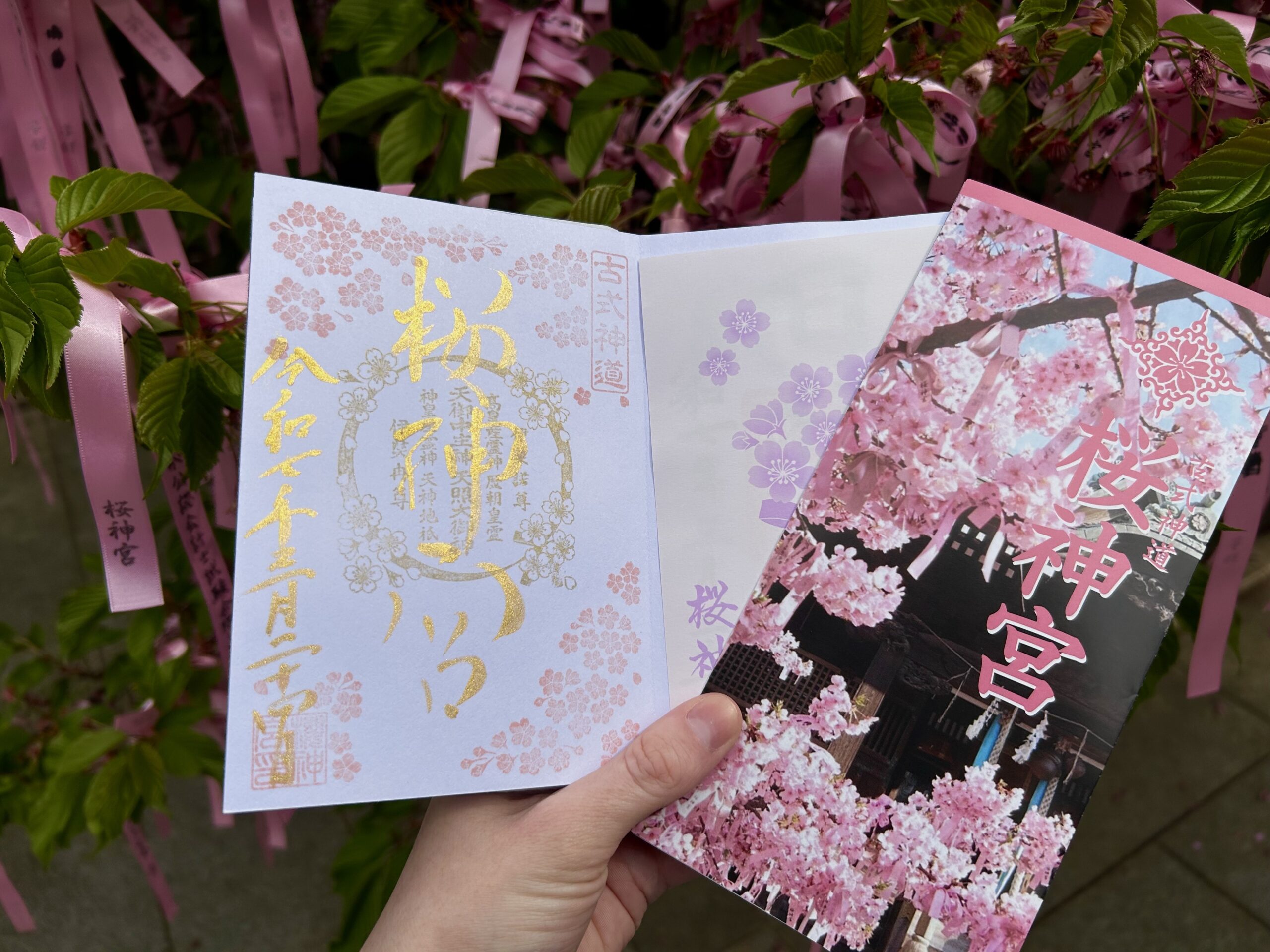Goshuin (御朱印) are beautiful, hand-stamped symbols often found in Japanese temples and shrines. They serve as documentation of a visitor’s pilgrimage or visit to a sacred site. The history of goshuin is linked to Japan’s religious practices, in particular, Buddhism and Shintoism.
The practice of stamps at temples can be traced back to the 8th century, during the Nara Period (710-794), however, the goshuin that we know today began to take shape during the Heian period (794-1185), as temples began to offer a written or stamped proof of a visitors pilgrimage. These early stamps were simple, with an inscription of the temple’s name.
In the beginning, visitors would recieve a goshuin to confirm their journey to a temple or shrine. These stamps were often collected in a specific book called a goshuincho or “goshuin book”.
Over time, the practice evolved into something more than just a form of documentation of one’s spiritual travel. As time progressed, especially during the Edo period (1603-1868), the stamps became more intricate and artistic. Temples began to employ calligraphers and artisans to create beautiful designs, incorporating elaborate Kanji characters, motifs, sometimes illustrations or seals specific to each time or shrine.
These unique and artisitic elements turned into a practice of collecting goshuin into a form of cultural expression blended with spirituality and craftmanship. Visitors began to seek out these stamps, and some even began to see the collecting of goshuin as a form of appreciation and spiritual connection.
Today, goshuin are still highly regarded by both religious visitors and collectors. They serve as not only records of a spiritual journey, but also as symbols of one’s connection to the sacred places they visit. Many people continue to collect goshuin, and the practice has become popular with many tourists.
What is a Goshuincho?

All goshuin must be stamped on the pages of these books. Officially known as goshuincho (御朱印帳), these books serve as record proof of vistation to various shrines and temples. Goshuincho can be bought at shrines or temples directly, or you can find them at stationary stores as well.
If you decide to buy them directly at a shrine or temple, you will usually find the kanji for goshuincho written on the front, and the name of the shrine or temple written on the back. (This is my goshuincho from Daishoin Temple in Miyajima).
Goshuincho that isn’t sold at shrines or temples, tend to have covers that are either: plain with a simple print; extremely elaborately designed, hand-carved wooden covers, or sometimes limited-time ones with unique designs. These books typically are priced between 1000-3000 yen.
Keep in Mind…
- Don’t give your goshuin or goshuincho away: Goshuin are believed to be blessings. Giving them away, especially giving away a book compiled of goshuin, is equivalent to giving away your blessing.
- Don’t use goshuincho for things other than collecting goshuin: Don’t multi-use your goshuincho for anything other than goshuin. Otherwise your book will be turned away.
- Pay your respects to the temple or shrine before collecting goshuin: The primary purpose of visiting a shrine or temple is to appreciate its deity, landscape and architecture, not to collect goshuin. Take your time to appreciate all the temple or shrine has to offer before getting your goshuin.
- Do not take photographs of kannushi unless permission is given: Kannushi are assigned a job that they take great pride in. If you would like to take a photograph or video of the calligraphy process, permission will have to be given first.
- Have change in exchange for the stamping fee: Most shrines and temples in Japan only except cash.
Understanding Goshuin
Now that you’ve got your goshuin you can begin to learn the structure of it.

- Red Stamp placed in the center of the page: The large red stamp contains the name of the shrine or temple, or a symbol of representation.
- Smaller Red Stamps: the smaller red stamps symbolize the shrine or temples deity.
- Main Calligraphy in the center of the page
- a. Largest Calligraphy: The largest calligraphy writes out the name of the shrine or temple in Kanji. (in this case it was Nezu Shrine)
- b. Smaller calligraphy written to the sides of the largest calligraphy: Some temples or shrines names may be longer than three to six characters. In some cases, the kanji is split up with the ‘main’ shrine or temple written in a larger calligraphy, while the trailing or following kanji are written in a smaller size to either sides (sometimes both) of the larger calligraphy.
- Calligraphy to the left side of the page: This represents the date of your visit to the shrine or temple. The format used is year __ of the ___ era, __ month, ___ day (__年,__月__日). For example: My date of visit to Nezu Shrine was the 7 year of the Reiwa Era (令和), 3月 20 日, i.e. March 21, 2025.
In conclusion, goshuin carries a rich history, beginning as a simple pilgrimage to evolving into intricate spiritual art. As both a religious and cultural treasure, they provide a unique way to engage with Japan’s sacred history, and to document ones personal journey through the country’s temples and shrines. Now that you have learned more about goshuin, it’s time for you to go out, visit a temple or shrine and collect your own. Though it may be seen as an activity mostly carried out by Japanese, it can be equally just as meaningful for tourists and travelers to collect as well.
To see a list of some shrines and temples to visit, check out the Shrines & Temples category:


Leave a Reply